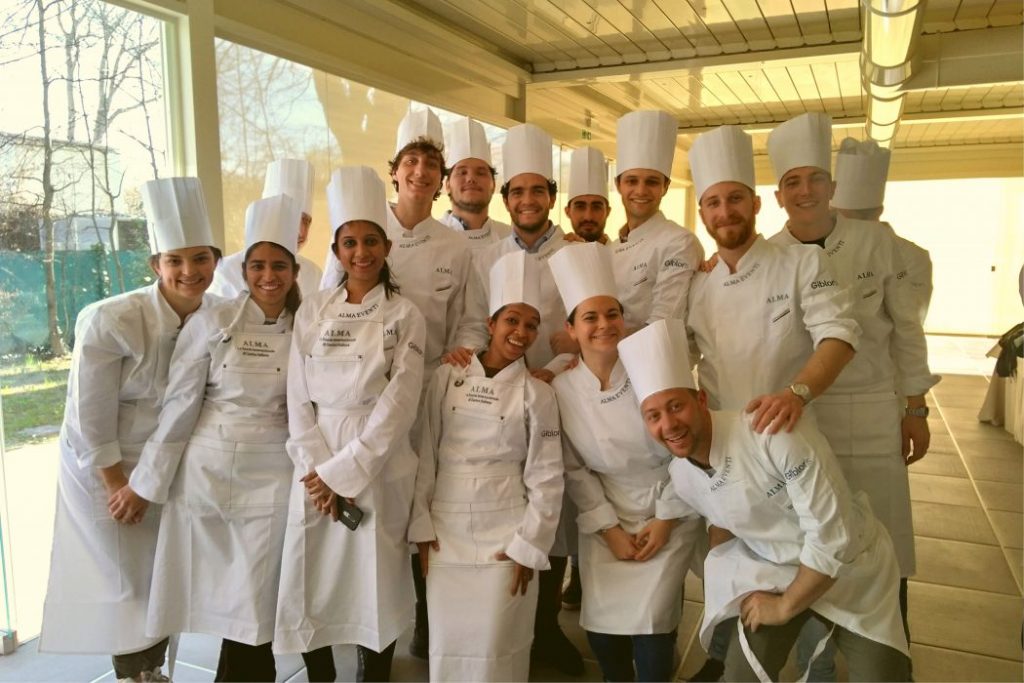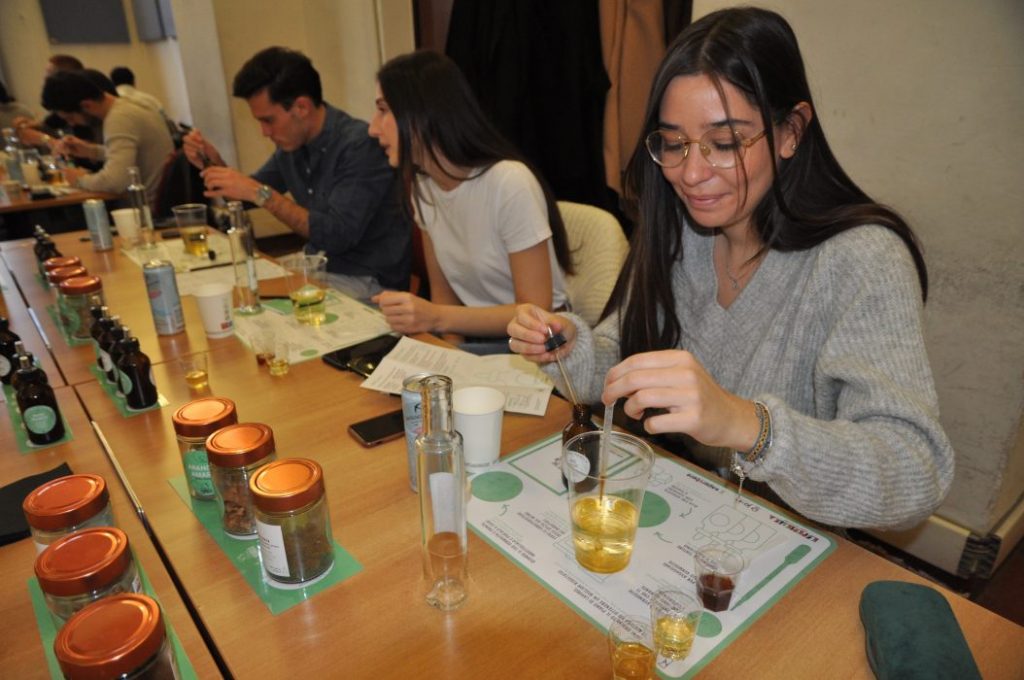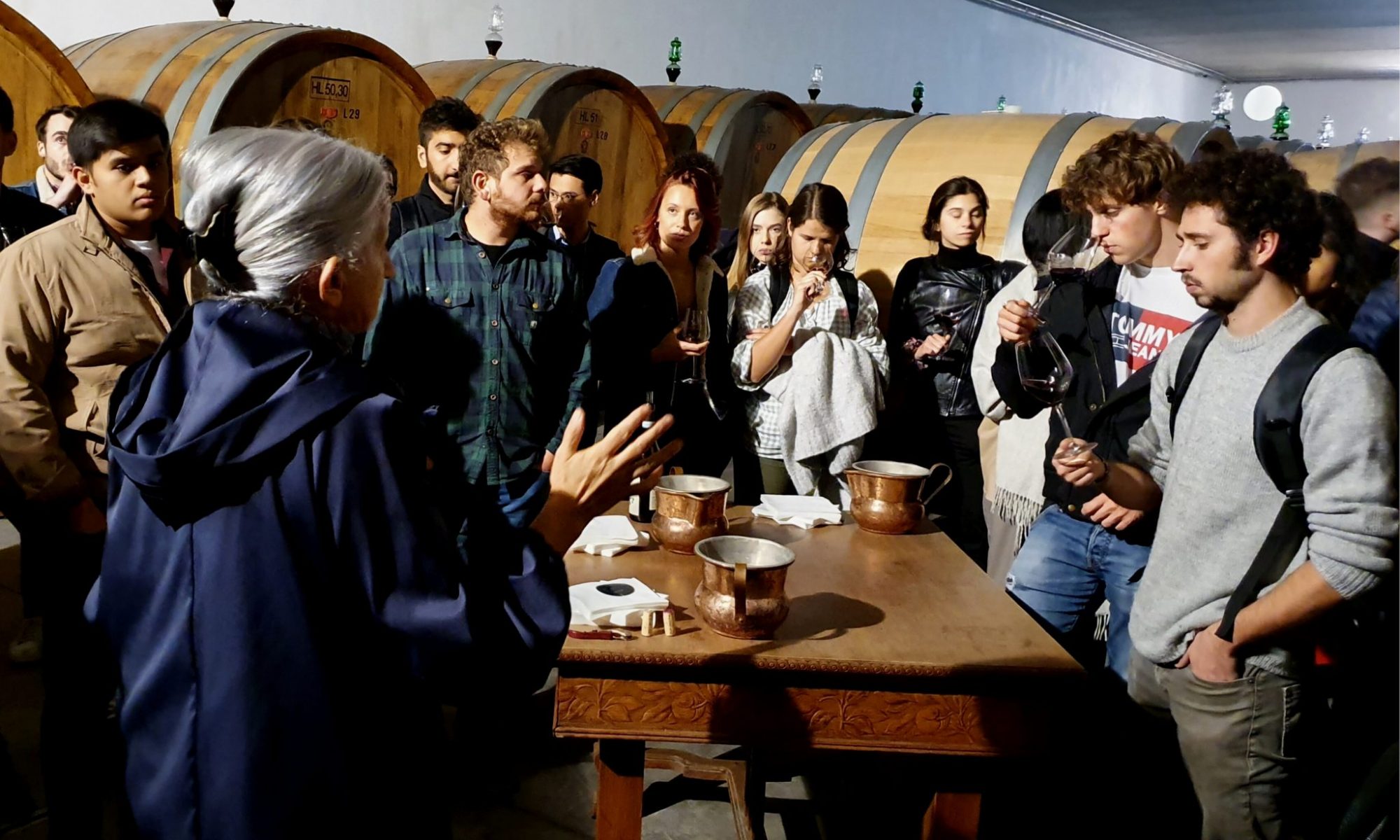By Dissapore, please find here the original article
Francesco Venuti, Academic Director of the ESCP MSc in International Food & Beverage Management, talks about the Food and Beverage managers’ profile of today and tomorrow.
“There was a time when you entered a company and then probably ended your career in that same company, perhaps in the same department. This is no longer the case“: this is explained to us by Francesco Venuti, Academic Director of the MSc in IFBM at ESCP Business School, a post-graduate study programme which in April 2021 ranked first place on Eduniversal’s global ranking of the best specialised programmes preparing for an international career in the food and beverage industry.
The master aims to broaden students’ education because “the age of the fragmentation of knowledge is over“. Systemic capacity, flexibility, and knowledge of emerging trends and their management are the characteristics of the manager of tomorrow; in the gastronomic and non-gastronomic fields. What we have learned by interviewing Venuti is that traditional classifications and distinctions between sectors and types of companies are also evolving.

What characteristics do companies expect from food managers today?
The traditional manager is no longer enough; we need to have more and more systemic skills, more managerial skills, but also technical ones. It is not necessary to be a blockchain technician or a digital expert but to have basic knowledge of those sectors. On the other hand, those with a more technical background, for example, those who have studied nutritional sciences, must necessarily integrate with notions of business. In addition, communication is undoubtedly fundamental today.
Our sector will be increasingly “phygital”: the digital environment will integrate with the physical one, making it essential to effectively incorporate online experiences with offline ones. A strategy that already proves to be successful today, reduces the discontinuity between what is experienced onsite and online, whenever possible.
With this in mind, consider that the gastronomic field is highly experiential; here, the space for innovation is vast. An example is the distance between the drivers that determine the experience of offline and online catering: a dinner at the table of a restaurant and the same delivered at home. There is a lot to work on in improving the “offsite” experience, as well as on the interpenetration between the two fronts, to minimise the distance.
Can the restaurateurs manage it?
Some restaurateurs are actually entrepreneurs and innovators. Within the sector there is plenty of space for innovation, and it will undoubtedly have a competitive advantage. The desire to innovate is also not necessarily innate; even small entrepreneurs have room to develop their business.

What are the most suitable degrees for vertical training, such as business in food and beverage?
In our master, there are several graduates in economics, many in nutrition sciences, others in literature, history, and philosophy: it is not a question of specific degrees, but more of passion. However, I would advise against taking this path because it “works” or is fashionable, however much the market is there, and you can find work. We need to be flexible, ready to orient and reorient ourselves according to trends. In short, it is more a matter of attitude, also because professionalism today is very composite. I am thinking, for example, of the usefulness of a mathematics degree in data analysis to provide management with suggestions for making their own decisions. We do not train marketing or communication specialists: we give systemic knowledge. In the first semester, they learn all the basic knowledge in management, and then they go into the specific declining their expertise according to their orientation.
In what areas, specifically, are agri-food companies hiring?
Today, large companies all have departments dedicated to sustainability, and even medium-sized ones have taken this direction. However, we also need those that deal with budgets and reporting; on this front, it is worth emphasising that while structured companies have all the necessary tools, small and medium-sized companies are more in difficulty. And failing to report one’s actions can result in a severe penalty. For example, an Italian meat supplier company managed to win a contract for a large multinational catering company abroad because the previous supplier did not respond adequately to the parameters related to sustainability.
Is it reasonable to think that many non-agri-food companies are differentiating with food?
For many years we have gone in the direction of hyper-specialisation and hyper-fragmentation: the inversion of this trend will be increasingly evident. Just as the tremendous competitive advantage at work will be of those with a systemic vision, companies will increasingly need to be integrated.
Sector classifications will be increasingly fluid, and to some extent, they already are. What does Ikea produce? What does Amazon? And Uber? The answer lies in the activities, not in the categories, and food will increasingly become an area interpenetrated with other categories. This is about innovation. Then there is the entire pre-existing sector: Costa cruises, for example.
It is crucial to open up to new opportunities for collaboration.

How is the sector changing, in response to the crisis caused by Covid-19 and in general?
The food and beverage field has been impacted differently to other sectors, with a necessary distinction between catering and nutrition. The pandemic has had a significant impact on hospitality. Still, it has led to a dynamic response (think of the boom in dark kitchens, the sharp acceleration in food delivery, novelties such as home delivery boxes). In short, a bit like what happened in schools, Covid has led to severe problems and therefore a strong acceleration of phenomena that were already underway, especially in terms of technology and innovation.
On the other hand, the whole food sector, in the stricter sense, has hardly known any crisis other than supply chain problems (anomalous trends in demand). If we look at individual sectors, the crisis did not actually exist. For example, I am thinking of sparkling wines, which have even encountered an increase in demand.
As for the rest, the trends that had already started are continuing: agrifood-tech, sensitivity to ethics and the environment, health, the rediscovery of culinary and local traditions, of course, sustainability, the reduction of waste, traceability, and technologies.
A separate chapter concerns the new emerging models: plant-based meats, novel foods, and the introduction of insects into cultures that feel “disgust” towards them, with lots of consequent strategies to overcome it. And in line with the previous point, it relies on sustainability and nutritional values, considering the high protein value of these “new foods”, calculated in relation to the environmental impact on the climate, and is very advantageous compared to meat.
The Italian version of this article was published on Dissapore.


